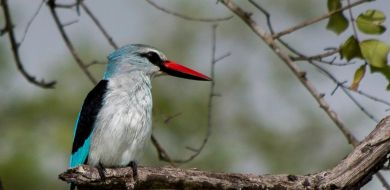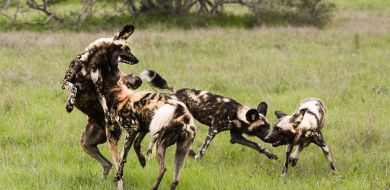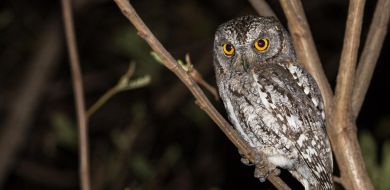Sabi Sabi Wild Facts: Zebra
on Dec 16, 2014Zebras belong to the genus Equus which also includes horses and asses. In sub-Saharan Africa there are there are three main zebra species, Plains zebra, Grevy's zebra and Mountain zebra. A fourth species, the quagga, became extinct over 100 years ago.
The Plains zebra have several sub-species, of which the Burchell's zebra is the type seen in the Sabi Sabi bushveld. Burchell's zebra is named after the British botanist and naturalist William John Burchell, who spent several years in Southern Africa in the early 1800's, researching plants and animals. Many species of birds and plants are also named after this avid collector and explorer.
Zebras, which are herbivores, are mainly grazers. Their teeth, which are able to both grind and crop grasses, keep growing for the zebra's entire life. Although these animals prefer to live fairly close to a dependable water source, their ability to eat many types and lengths of grasses makes them very adaptable. Zebras are often the first animals to enter "virgin" grassland areas, using their long teeth to crop the tall grasses, with wildebeest, the short grass grazers, following close behind. Zebras and wildebeest are thus complementary grazers.

There is however, another very good reason why the two species live in such close proximity to each other - security. Zebras have excellent eyesight, being able to see well during the day and at night, while wildebeest, which have poor eyesight, have a good sense of hearing and smell. Scientists believe that zebra may even be able to see in colour. A combination of their good eyes, ears and noses increases their chances of sensing danger. When a zebra perceives danger it will bray loudly, warning the rest of its own herd as well as the nearby wildebeest.
Every zebra has a stripe pattern which is as unique as a fingerprint. The Burchell's zebra, with its pale shadow stripe between the dark black and white, has vertical stripes on the front half of the body, and horizontal stripes on the back half. One theory is that the striping pattern, which also allows zebras to recognize each other, may afford them some camouflage. In the low light of dusk and dawn, the time of greatest predator activity, the patterning makes their outline indistinct, allowing them to blend into the background. It is also thought that the blurring of stripes in a herd of running zebra makes it difficult for predators to focus on a single animal within the group.

Plains zebras are social animals, often seen standing nose to tail mutually grooming each other. They live in small family groups known as harems (colloquially called dazzles), each harem led by one stallion controlling a few mares and their foals. Even when zebras join to form large herds, these family groupings remain intact. Until they are of the age to form their own harem, young males, which leave the herd at adolescence, tend to live alone or in small bachelor groups. These young, strong males sometimes become harem stallions by abducting females in oestrus.
Female zebras (mares, give birth every year or two, generally to a single foal, although twins foals are occasionally seen. Zebra foals can stand on their own just 20 minutes after birth, and are capable of running after about an hour. The baby is kept away from the rest of the herd for a few days to enable it to imprint or recognise its own mother.
At Sabi Sabi, the zebras' main enemies are the many lions which prowl the reserve. Other predators which will generally kill small young zebra are leopard, cheetah and wild dog. In central Africa where hyena hunt more than scavenge, this predator is also a definite zebra threat. But adult zebras are no easy prey. They have great stamina and can run at high speed in a zigzag pattern, making them very hard to catch. Their long teeth can inflict severe injury, and a single well-placed kick can deliver a mortal blow.






